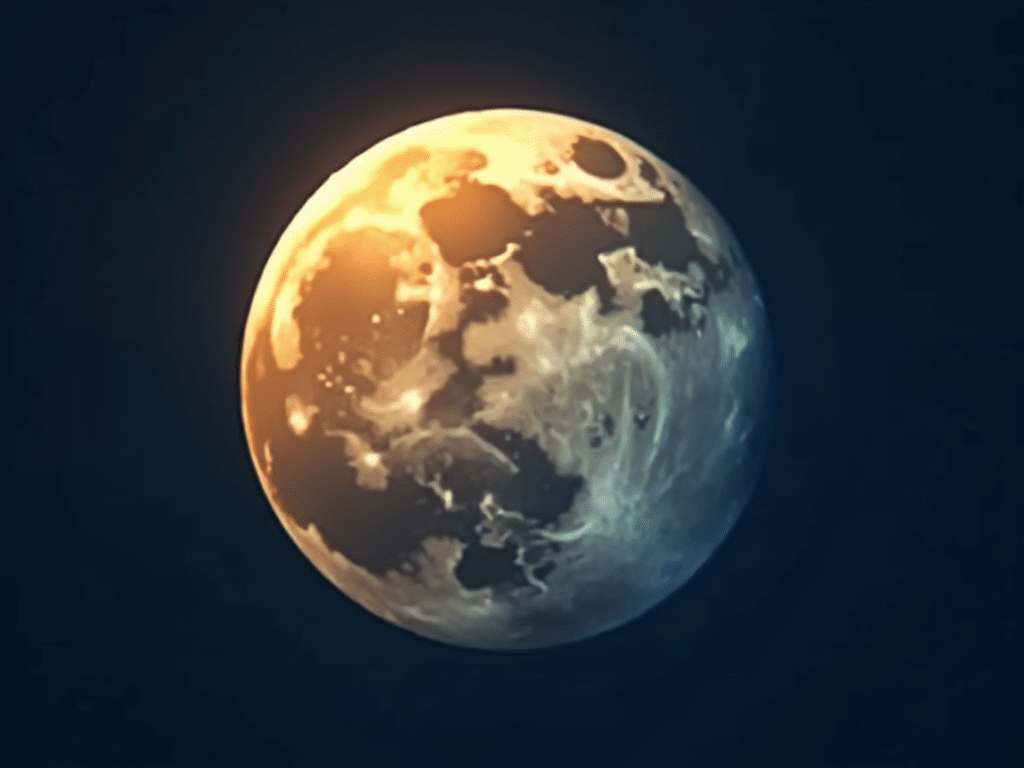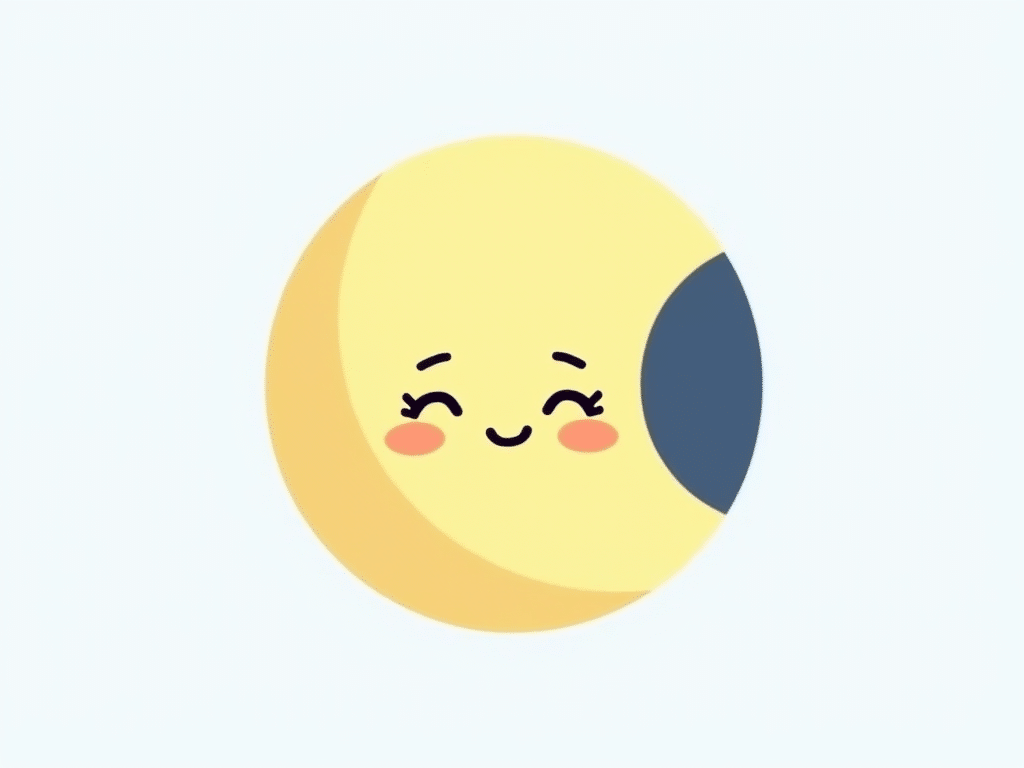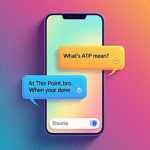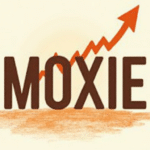Ever noticed that little moon emoji that’s not quite full but still mostly lit up? That’s the waning gibbous emoji 🌖, and it’s got a whole lot more going on than you might think! This tiny digital moon is not just a pretty face in your emoji keyboard; it’s packed with meaning, history, and even a touch of magic. Let’s dive into the world of this fascinating lunar symbol and discover why it’s more than just a way to say “good night” in your texts.
| Key Takeaways |
|---|
| The waning gibbous emoji represents a specific moon phase |
| It symbolizes reflection, gradual change, and the passing of time |
| The emoji’s design varies slightly across different platforms |
| It has both scientific and cultural significance |
| Creative uses include storytelling, poetry, and expressing emotions |

What’s a Waning Gibbous Moon 🌖, Anyway?
Before we get into the emoji, let’s talk about the real deal. A waning gibbous moon is what you see in the sky after a full moon, but before it reaches the half-moon stage. Here’s the lowdown:
- Waning: This means the visible part of the moon is getting smaller each night.
- Gibbous: A fancy word that means the moon is more than half lit, but not fully.
Imagine taking a big bite out of a cookie – that’s kind of what a waning gibbous moon looks like in the sky.
The Lunar Lowdown
Here’s a quick rundown of the moon phases in order:
- New Moon (invisible to us)
- Waxing Crescent
- First Quarter
- Waxing Gibbous
- Full Moon
- Waning Gibbous 🌖 (That’s our star of the show!)
- Last Quarter
- Waning Crescent
The Waning Gibbous Emoji: A Digital Moon in Your Pocket
Now, let’s talk about our emoji friend. The waning gibbous emoji 🌖 is designed to look just like its celestial inspiration. Here’s what you’ll typically see:
- A circular shape (duh, it’s a moon!)
- Most of it is bright or yellow
- A shadow creeping in from the right side
But here’s where it gets interesting – this emoji can look a bit different depending on what device or app you’re using.
Apple
Microsoft
More Than Just a Pretty Face: What It Means
The waning gibbous emoji isn’t just about looking cool in your messages. It’s got some deep meanings:
- Astronomical Accuracy: For space nerds, it’s a way to talk about actual moon phases.
- Symbolic Reflection: Many people use it to represent thinking about the past or winding down.
- Natural Cycles: It can symbolize the passage of time or the changing seasons.
- Emotional Expression: Some folks use it to show they’re feeling contemplative or a bit mysterious.
Personal Moon Musings
I remember once using this emoji in a text to my friend when I was feeling kind of introspective after a big event. It was perfect – not as dramatic as a full moon, but still capturing that sense of “wow, a lot just happened, and I’m thinking about it.” It’s like the emoji equivalent of sitting on your bed, staring out the window, and just… pondering.
Getting Creative with 🌖
The waning gibbous emoji isn’t just for astronomy buffs. People are using it in all sorts of creative ways:
- Storytelling: “It was a 🌖 night when the werewolf finally calmed down…”
- Poetry: Haiku anyone? “Waning gibbous high 🌖 / Shadows lengthen, time passes / Reflection begins”
- Mood Setting: “Movie night vibes 🌖🍿🎬”
Pro Tip: Try using the waning gibbous emoji with other night-themed emojis to create a whole nocturnal scene in your messages!
The Science Behind the Symbol
While it’s fun to use in texts, the waning gibbous moon (and its emoji) has some serious scientific cred. Here are some cool facts:
- This phase lasts about 7 days
- It rises after sunset and sets after sunrise
- It’s the best time to see certain features on the moon’s surface
Next time you use the 🌖 emoji, remember – you’re not just sending a cute symbol, you’re sharing a slice of astronomical awesomeness!
Continuing from where we left off, let’s dive deeper into the world of the waning gibbous emoji 🌖 and explore its various applications, cultural significance, and technical details.
The Waning Gibbous Emoji in Popular Culture
Our little moon friend has been making quite a splash in the digital world. Here’s how it’s lighting up our screens:
- Social Media Trends: People use 🌖 in their bios to show they’re night owls or deep thinkers.
- Meme Culture: It’s become a go-to symbol for “late-night thoughts” memes.
- Online Storytelling: Writers use it to set a mysterious or contemplative mood in micro-fiction.
Creative Combinations
The waning gibbous emoji really shines when paired with other emojis. Check out these cool combos:
- 🌖💭 – Late-night thoughts
- 🌖🐺 – Werewolf vibes (but calming down)
- 🌖📚 – Night-time reading
- 🌖🎭 – Introspective or dramatic mood
Educational Value: More Than Just a Pretty Face
Teachers and students are finding the waning gibbous emoji surprisingly useful:
- Lunar Phase Learning: It’s a fun way to remember this specific moon phase.
- Visual Aids: Great for online astronomy lessons.
- Memory Tricks: “Waning gibbous, light’s amiss” – a catchy rhyme to remember it’s past the full moon.
Technical Nitty-Gritty
For the tech-savvy among us, here’s some nerdy goodness about our 🌖 friend:
- Unicode: U+1F316
- Shortcode: :waning_gibbous_moon:
- Introduced: Unicode 6.0 in 2010
Platform Variations
Remember how I mentioned it looks different across platforms? Here’s a quick rundown:
| Platform | Design Characteristics |
|---|---|
| Apple | Golden with sharp shadow |
| Yellower with softer edge | |
| Microsoft | Pale yellow, bluish shadow |
| Samsung | Bright yellow, dark shadow |
Comparing Moon Emojis: A Lunar Lineup
The waning gibbous isn’t the only moon in the emoji sky. Let’s see how it stacks up:
- 🌑 New Moon: The start of the cycle
- 🌒 Waxing Crescent: Building up
- 🌓 First Quarter: Half-way there
- 🌔 Waxing Gibbous: Almost full
- 🌕 Full Moon: The big cheese
- 🌖 Waning Gibbous: Our star!
- 🌗 Last Quarter: Halfway back
- 🌘 Waning Crescent: The final sliver
Pro Tip: Use these in sequence to show the passage of time in your stories or social media posts!
The Future of the Waning Gibbous Emoji
What’s next for our celestial symbol? Here are some predictions:
- Animated Versions: Imagine a slowly waning moon in your messages!
- Customizable Colors: Maybe we’ll be able to change the moon’s hue to match our mood.
- AR Integration: Picture holding up your phone to see a virtual waning gibbous alongside the real one.
Wrapping Up: Why the Waning Gibbous Emoji Matters
So, why should we care about this little moon emoji? Here’s the deal:
- It connects us to the natural world in our digital lives.
- It’s a subtle way to express complex emotions and thoughts.
- It reminds us of the cyclical nature of, well, everything.
Whether you’re an aspiring astronomer, a night owl, or just someone who appreciates the beauty of the moon, the waning gibbous emoji 🌖 is a versatile little symbol that’s worth keeping in your emoji repertoire.
FAQs: Your Burning Questions Answered
- Can I use the waning gibbous emoji to actually track moon phases?
While it’s not scientifically accurate, it can be a fun way to roughly indicate the moon’s phase in your calendar or notes. - Is there a difference between the waning gibbous emoji and the actual moon phase in terms of meaning?
The emoji can be used more flexibly and symbolically, while the actual moon phase is a specific astronomical event. - Are there any cultural taboos around using moon emojis?
Some cultures have specific beliefs about the moon, so it’s always good to be aware of context when using any symbol. - Can the waning gibbous emoji affect the tone of a message?
Absolutely! It can add a touch of mystery, thoughtfulness, or even melancholy to your texts. - Is there a correct way to use the waning gibbous emoji?
There’s no strict rule, but it’s most commonly used to represent reflection, gradual change, or nighttime vibes.
Remember, emojis are a form of language, and like any language, their use evolves. The waning gibbous emoji 🌖 is your ticket to expressing a whole universe of ideas in a single character. So go ahead, let your messages shine with lunar light!







